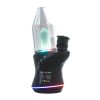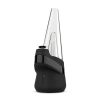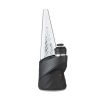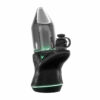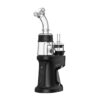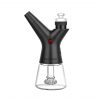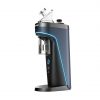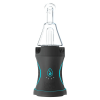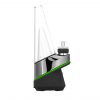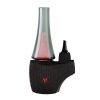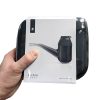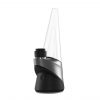Health & Wellness, How to Guides
The History and Evolution of Dabbing: Techniques, Tools, and Significance
Dabbing has become an increasingly popular method of consuming cannabis concentrates in recent years, but its history dates back much further than many people realize. From its ancient origins to its modern-day evolution, dabbing has a rich and fascinating history that speaks to its enduring cultural significance. In this article, we’ll explore the history and evolution of dabbing, including its origins, cultural significance, and the various techniques and tools used for dabbing.
The Origins of Dabbing
Dabbing has been around for centuries, although its early origins are somewhat murky. Some historians believe that the practice of dabbing originated in India, where people would heat up hashish and inhale the vapors through a pipe or other device. Others suggest that dabbing has its roots in the Middle East, where people have been smoking concentrates for centuries.
However, the modern-day dabbing that we know and love is believed to have originated in the United States in the 1970s. At that time, a group of California cannabis enthusiasts began experimenting with heating up cannabis concentrates and inhaling the vapors through a specialized pipe known as a “oil rig.” This practice quickly caught on among the cannabis community, and by the 1990s, dabbing had become a popular method of consuming concentrates.
The Cultural Significance of Dabbing
Dabbing has a rich cultural significance that speaks to its enduring popularity among cannabis enthusiasts. For many people, dabbing represents a more potent and efficient way to consume cannabis concentrates. Because dabbing involves heating up a concentrated form of cannabis, it can produce a much more intense high than smoking traditional flower. Additionally, dabbing allows people to enjoy the benefits of cannabis without the negative effects of smoking, such as coughing and lung irritation.
Beyond its practical benefits, dabbing has also become an important cultural symbol within the cannabis community. Many cannabis enthusiasts view dabbing as a way to express their love for the plant and their commitment to exploring its many unique properties. Dabbing has also become a way for people to connect with each other and share their passion for cannabis in a social and communal setting.
Techniques and Tools Used for Dabbing
Dabbing involves heating up a concentrated form of cannabis and inhaling the vapors that are produced. There are several techniques and tools that are commonly used for dabbing, including:
Dab Rigs
A dab rig is a specialized pipe that is used for dabbing. It typically consists of a water pipe with a specialized nail or bowl that is designed to hold the concentrated cannabis. When dabbing, a person heats up the nail or bowl using a torch, and then places the concentrate onto the hot surface to produce vapors that can be inhaled.
E-Nails
An e-nail is an electronic version of a dab rig that eliminates the need for a torch. Instead of heating up the nail or bowl manually, an e-nail uses an electric heating element to heat up the surface to the desired temperature. This allows for a more precise and controlled dabbing experience, without the risk of accidental burns or injuries.
Dab Pens
Dab pens are handheld devices that are designed for dabbing on the go. They typically consist of a battery-powered heating element and a small chamber for holding the concentrate. When using a dab pen, a person simply places the concentrate into the chamber and presses a button to heat up the element and produce vapors that can be inhaled.
The Evolution of Dabbing
Over the years, dabbing has evolved in a variety of ways to meet the changing needs and preferences of cannabis enthusiasts.
One of the biggest changes has been the development of new types of concentrates that are specifically designed for dabbing. For example, shatter, wax, and budder are all types of concentrates that have become increasingly popular in recent years due to their potency and unique flavors.
Another important evolution in the world of dabbing has been the development of new tools and techniques that make the process more efficient and enjoyable. For example, carb caps are small caps that are placed over the nail or bowl during the dabbing process, helping to regulate the airflow and ensure that all of the concentrate is vaporized. Additionally, dabbers are specialized tools that are used to handle and apply concentrates to the nail or bowl, making the process more precise and less messy.
Despite its popularity, dabbing has also faced its fair share of controversy and criticism over the years. Some people have raised concerns about the safety of dabbing, particularly with regards to the use of torches and other heating elements. Additionally, some people worry that dabbing could lead to an increase in the use of more potent forms of cannabis, potentially leading to greater risks of addiction and other negative health outcomes.
However, for many cannabis enthusiasts, dabbing remains an important and beloved part of their cannabis experience. Whether they prefer the traditional rig and torch setup or opt for a more modern e-nail or dab pen, dabbing offers a unique and potent way to enjoy the benefits of cannabis concentrates.
In conclusion, the history and evolution of dabbing speak to its enduring cultural significance and appeal among cannabis enthusiasts. From its ancient origins to its modern-day incarnation, dabbing has evolved in many fascinating ways over the years, driven by changing preferences and technological innovations. Whether you’re a seasoned dabber or new to the world of concentrates, understanding the history and techniques of dabbing can help you appreciate the unique and complex nature of this beloved cannabis practice.
FAQs
- Is dabbing safe?
- While dabbing does involve some inherent risks, such as accidental burns or injuries from torches, when done properly, it can be a safe and enjoyable way to consume cannabis concentrates.
- How do I choose the right type of concentrate for dabbing?
- There are many different types of concentrates available, each with their own unique flavors and properties. Some popular types include shatter, wax, and budder. Experimenting with different types can help you find the one that’s right for you.
- Can dabbing lead to addiction?
- While there is some concern that dabbing could lead to an increase in the use of more potent forms of cannabis, there is no evidence to suggest that dabbing is inherently more addictive than other forms of cannabis consumption.
- What is the best way to heat up a nail or bowl for dabbing?
- The best way to heat up a nail or bowl will depend on the specific type of tool you are using. With traditional dab rigs, using a torch is the most common method. With e-nails, the device will heat up the nail or bowl automatically.
- Are there any health risks associated with dabbing?
- While dabbing does involve inhaling concentrated vapors, there is no evidence to suggest that it poses any greater health risks than other forms of cannabis consumption. As with any type of smoking or vaping, it’s important to use caution and moderation to minimize any potential risks.
Some popular dab rigs
- Quality of S&B Volcano Bags - May 9, 2024
- Arizer Ascends: Why I Abandoned Tiny Might and Firefly 2 - May 8, 2024
- Why I switched to a Concentrate Vaporizer in 2024! - May 8, 2024

